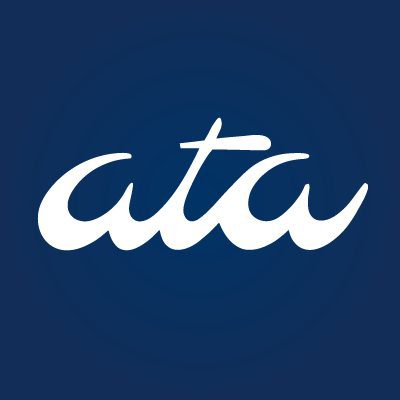Foreign Sign Language Interpreting
No matter your linguistic or cultural background, ICS has a professional interpreter who can speak or sign your language!

Our talented sign language interpreters are capable of simultaneous or consecutively communicating into the following sign languages:
- International Sign (IS)
- American Sign Language (ASL)
- Conceptually Accurate Signed English (CASE / PSE)
- Italian Sign Language (LSI)
- Spanish Sign Language (LSE)
- Brazilian Sign Language (LIBRAS)
- Mexican Sign Language (LSM)
- Peruvian Sign Language
- Venezuelan Sign Language (LSV)
- Greek Sign Language (GSL)
- Russian Sign Language (RSL)
- Ukrainian Sign Language (UKL)
- British Sign Language (BSL),
- Irish Sign Language (ISL)
- and more by request!
Never worked with an interpreter before? Don’t sweat it!
We’ve included some helpful tips to ensure your inclusive experience goes smoothly.
A Deaf interpreter can be a qualified American Sign Language (ASL) interpreter if their native sign language is ASL. However, Deaf interpreters are only one kind of ASL interpreter. More commonly, people are familiar with hearing ASL interpreters. Let’s look at each more closely.
A Deaf Interpreter, or DI, is a Deaf or hard-of-hearing individual who is a fluent or native signer for one or more specific sign languages. Deaf Interpreters are exceptionally trained and skilled at conveying spoken language into their native sign language, and vice versa. Because the interpreter is Deaf or hard-of-hearing, they have an innate understanding of Deaf culture and the nuances of communicating in a visual language. DI’s commonly work as a team with hearing sign language interpreters who provide a signed transliteration of the spoken language as well as who voice the Deaf Interpreter’s signed communication into the target spoken language. In instances where a Deaf Interpreter is working only into sign language, such as a presentation, performance, or conference, the Deaf Interpreter may prefer to work from captions rather than with a hearing interpreter. Because Deaf interpreters facilitate communication for their native sign language, not all Deaf interpreters know ASL. Instead, a Deaf interpreter may be qualified to interpret another sign language, such as Mexican Sign Language, British Sign Language, or International Sign.
Deaf interpreters are language and cultural experts based on their extensive personal experience within the Deaf community. Many Deaf interpreters undergo significant training, internship, and professional development in order to further develop their skills and to work in nuanced industries, such as legal, mental health, and DeafBlind settings. Deaf interpreters who pass the Registry of Interpreters for the Deaf written and performance exams and meet the educational requirements are awarded certification, and referred to as Certified Deaf Interpreters, or CDI’s.
On the other hand, a hearing ASL interpreter, or HI, is a bilingual individual who is fluent in American Sign Language and one or more spoken languages, but who does not identify as “Deaf” or as a native signer. Hearing ASL interpreters are trained and skilled in interpreting spoken language into sign language, and vice versa. They may have learned sign language and Deaf culture second-hand, such as in college or university, or may have grown up with Deaf family members or friends.
Hearing ASL interpreters are valued communication resources; however, they do have limitations to their abilities. Many hearing ASL interpreters are not qualified to work in sensitive settings, such as legal or mental health, or with consumers with specific needs, such as Deaf individuals with multiple disabilities, Deaf immigrants, or DeafBlind individuals. Hearing ASL interpreters who pass the Registry of Interpreters for the Deaf written and performance exams and meet the educational requirements are awarded certification, and referred to as Certified Interpreters, or CHI’s.
When it comes to deciding which type of interpreter is appropriate for an accessibility need, there are several factors to consider. First, consider the context and risks associated with the accessibility request. Is there a sensitive subject that needs to be discussed? Is someone’s health or wellbeing at risk if there is miscommunication? Next, consider what needs the consumer may have that would warrant a Deaf Interpreter. Does the consumer have multiple disabilities that require special accommodation? Does the consumer use a foreign sign language or modality? Finally, consider if proper representation is warranted. Is this a press conference or public address where a native signer is required? Do you anticipate a large Deaf audience?
It’s important to note that both types of interpreters are highly skilled professionals who play a crucial role in facilitating communication; however, each interpreter has an appropriate placement which must be carefully considered for an optimally inclusive experience. When in doubt, reach out to an Inclusive Communication Services Accessibility Coordinator for further guidance and information.
Spanish Sign Language (Lengua de Signos Española or LSE) and American Sign Language (ASL) are two distinct sign languages used in different parts of the world. While both languages share some similarities, they also have significant differences in terms of grammar, vocabulary, locality, and culture.
One of the main differences between LSE and ASL is the region in which each sign language is used. ASL originally developed from French Sign Language (LSF) and is most commonly used in the United States, Canada, West Africa, and parts of Southeast Asia. On the other hand, LSE developed and is still used as the primary sign language in Spain. Because each language developed and is used in separate geographical regions, there are many cultural differences between their respective Deaf communities.
One common misconception is that Spanish Sign Language is used by all Spanish-speaking countries. In fact, almost every Spanish-speaking country has its own unique sign language that developed based on cultural influences within the local Deaf community. LSE is not used in Central and South America and should not be assumed as a Deaf person’s primary language unless the Deaf individual is from Spain.
Another difference between LSE and ASL is the grammar. LSE follows a subject-verb-object (SVO) word order, similar to spoken Spanish, while ASL typically follows a subject-object-verb (SOV) word order. This means that sentences in LSE often have a more straightforward structure, while ASL sentences can be more complex and use more spatial grammar.
Another difference between the two languages is vocabulary. For example, the sign for “water” in LSE is different from the sign for “water” in ASL. This means that native users and interpreters of one sign language will not be readily understood by users of the other sign language.
Overall, while LSE and ASL share some similarities, they are distinct languages with different grammar, vocabulary, and cultural influences. Understanding these differences is crucial for effective communication and interpretation for Deaf communities living in Spanish-speaking and English-speaking localities. When in doubt, reach out to an Inclusive Communication Services Accessibility Coordinator for further guidance and information.
Mexican Sign Language (Lengua de Señas Mexicana or LSM) is the sign language used by the Deaf community in Mexico. It is a visual language that uses a combination of hand gestures, facial expressions, and body language to convey meaning similar to how hearing individuals use words, intonation, and prosody to convey meaning.
The development of LSM can be traced back to the early 19th century, when the first school for the Deaf in Mexico was established in Mexico City. At the time, there was no standardized sign language in Mexico, and students at the school had to develop their own unique language to communicate with one another.
Over time, these signs spread beyond the school and became more standardized as Deaf communities throughout Mexico learned to communicate with each other through a shared sign language. LSM was further developed in the mid-20th century with the establishment of a National Federation of Deaf People, which helped to standardize the language and promote its use.
Today, LSM is recognized as the official sign language of Mexico and is used by Deaf people throughout the country. Like other sign languages, it continues to evolve and adapt to the needs of its users, and is an important part of Deaf culture in Mexico. For more information about Mexican Sign Language, LSM interpreting services, or other accessibility needs, reach out to an Inclusive Communication Services Accessibility Coordinator.
No, there is no Spanish equivalent of American Sign Language (ASL) because sign languages are not based on spoken languages. In fact, sign languages often have completely different grammar and syntax from their respective, local spoken languages. This means that not all “Spanish” Deaf people use the same sign language as “Spanish” or “Hispanic” is a general term referring to a diverse range of backgrounds and locations. To identify a Deaf person’s most likely preferred sign language, you must drill down further to identify where the Deaf person is from. Still, in some instances, a Deaf person of Hispanic or Spanish descent may use a different sign language than the sign language used by their family’s country of origin.
A better perspective of this question is, “Do Spanish-speaking countries have a sign language?” to which the answer is – yes! Every Spanish-speaking country has its own unique sign language developed based on cultural and linguistic influences within the local Deaf community. This means that there is a Mexican Sign Language (LSM) for Mexico, a Peruvian Sign Language (LSP) for Peru, and even an Argentine Sign Language (LSA) for Argentina. In some cases, there are even additional regional sign languages and dialects within these countries’ Deaf communities. While many of these sign languages share similarities, they each have unique nuances that distinguish them and prevent users from readily understanding all the sign languages.
On the other hand, you may be wondering how a person who uses a sign language like LSM or LSA can communicate when traveling abroad or relocating to a new country. For these special circumstances, a Deaf Interpreter (DI) who has fluency in the Deaf consumer’s native sign language can bridge the communication gap. Paired with a hearing interpreter, the Deaf interpreter will sign between the Deaf consumer’s preferred language and ASL, and the hearing interpreter will interpret between ASL and the preferred spoken language, such as English or Spanish. This may seem like an extensive relay system; however, implemented properly, this interpreter pair can bridge communication between foreign sign and spoken languages. For more information about sign languages or communicating with Spanish speakers, reach out to an Inclusive Communication Services Accessibility Coordinator.
Mexican Sign Language (Lengua de Señas Mexicana or LSM) and Spanish Sign Language (Lengua de Señas Española or LSE) are two distinct sign languages used in different parts of the world. While both languages share some similarities, they also have significant differences in terms of grammar, vocabulary, regional usage, and culture.
One of the main differences between Mexican Sign Language and Spanish Sign Language is the region in which each language is used. As the name implies, Mexican Sign Language is unique to Mexico and developed within the local Deaf community. Similarly, Spanish Sign Language is unique to Spain, growing from the cultural influences within Spain’s local Deaf community.
Culturally, LSM and LSE also have some differences. LSM has been influenced by both Mexican and American Sign Language, while LSE has been influenced by Spanish Sign Language and Catalan Sign Language. This means that LSM and LSE have different regional dialects and cultural norms that are unique to each language and community. Recognizing these differences is crucial for implementing effective communication and interpretation solutions for Deaf communities in Mexico and Spain. For more information about accommodating Deaf LSM and LSE signers or hearing Spanish speakers, reach out to an Inclusive Communication Services Accessibility Coordinator.
Inclusive Communication Services is proud to offer a comprehensive range of accessibility services to help businesses and organizations ensure that all members of the community have equal-access to their services, events, and media content. As part of our commitment to being a leading provider of accessibility services, ICS offers foreign sign language interpretation and translation for over 30 sign languages, including:
- American Sign Language (ASL)
- Conceptually Accurate Signed English (CASE / PSE)
- Italian Sign Language (LSI)
- Spanish Sign Language (LSE)
- Brazilian Sign Language (LIBRAS)
- Mexican Sign Language (LSM)
- Peruvian Sign Language (LSP)
- Venezuelan Sign Language (LSV)
- Greek Sign Language (GSL)
- Russian Sign Language (RSL)
- Ukrainian Sign Language (UKL)
- British Sign Language (BSL),
- Irish Sign Language (ISL)
- International Sign (IS)
We understand that communication is key in any business, and that’s why we are committed to offering a wide range of sign languages to meet the needs of our clients and their diverse consumers. Whether it’s for a workplace, theatrical performance, or video media content, ICS has the resources and expertise to provide high-quality sign language interpretation services, no matter the target sign language.
Our team of experienced accessibility coordinators and sign language interpreters have a deep understanding of the unique cultural and linguistic considerations required for effective accessibility solutions. We have an extensive, global network of interpreters to accommodate even the most nuanced of service requests. For more information about our foreign sign language service, reach out to an Inclusive Communication Services Accessibility Coordinator.
At Inclusive Communication Services, we understand that equal-access to communication is critical; that’s why we are committed to providing high-quality accessibility services to help your organization reach a wider, more diverse audience. We are proud to offer online (i.e. virtual, remote) foreign sign language interpreting services for over 30 sign languages, including American Sign Language (ASL), British Sign Language (BSL), Mexican Sign Language (LSM), and more.
Our online sign language interpreting services are designed to meet the needs of your organization and its Deaf or hard-of-hearing employees, customers, or audience members. Whether it’s for an online webinar, conference, team meeting, or media content, our experienced sign language interpreters can provide real-time interpretation between a variety of spoken and sign languages to ensure that all participants are provided an inclusive experience.
We also understand the importance of user-friendly accessibility. That’s why our virtual sign language interpreting services are fully compatible with a range of devices and platforms, including laptops, tablets, smartphones, and more. We also provide complimentary consultations and resources to help businesses and organizations ensure that their online events are fully accessible. With Inclusive Communication Services, you can ensure that your virtual events are equally accessible to the Deaf and hard-of-hearing. For more information about our virtual remote foreign sign language service, reach out to an Inclusive Communication Services Accessibility Coordinator.
At Inclusive Communication Services, one of our signature services is sign language tutoring, where we connect businesses, organizations, and individuals with Deaf native signers who provide personalized instruction in sign language, available both in-person or virtually and in one-on-one or group settings.
Our sign language instructors are all Deaf native signers who are fluent in American Sign Language (ASL). They have extensive teaching experience, including a deep understanding of the unique cultural and linguistic aspects of ASL, and provide an immersive learning experience to facilitate effective language development. Workplaces can welcome new Deaf colleagues and individuals communicate with new members of their community in a matter of weeks.
Whether it’s for personal pleasure or professional growth, our sign language tutors can help individuals of all backgrounds become conversational or even fluent in sign language. Our Deaf tutors provide personalized instruction that is tailored to the needs and goals of each student, making it a highly effective approach to learning sign language. With our online sign language tutors, individuals can gain valuable language skills and cultural insights that can help them communicate more effectively with the Deaf community, whether in their workplace, community, or local grocery store. For more information about our sign language tutoring services, reach out to an Inclusive Communication Services Accessibility Coordinator.
Inclusive Communication Services is committed to ensuring that everyone, regardless of their abilities or language needs, has equal-access to all aspects of communication and daily life. We recognize the importance of language accessibility, and as such, we provide a wide range of interpreting and translation services to meet the diverse needs of our consumers. This includes Ukrainian Sign Language (USL/UKL) interpretation. This service is particularly valuable for Deaf Ukrainian immigrants and their families who use USL as their primary means of communication. We understand that language is a crucial part of one’s identity, and we strive to honor and respect each individual’s cultural and linguistic background by providing quality accessibility services geared to each consumer’s unique needs and preferences. Moreover, ICS has a roster of qualified sign language interpreters, including Deaf interpreters, who have fluency in both ASL and USL, enabling them to bridge the communication gap between individuals who use different sign languages or individuals who migrate to the U.S. without knowing ASL.
At Inclusive Communication Services, we believe that everyone deserves equal-access, and we strive to provide effective accessibility solutions to meet our consumers’ needs. For more information about our foreign sign language services, including Ukrainian Sign Language, reach out to an Inclusive Communication Services Accessibility Coordinator.
Inclusive Communication Services is proud to offer Swedish Sign Language (SSL) interpreting services to support the needs of the Deaf and hard-of-hearing community in Sweden and abroad. Our team of highly skilled SSL interpreters facilitate effective communication between Deaf consumers and their hearing counterparts in a variety of settings, including educational courses, medical appointments, legal appearances, and more. We recognize the importance of language accessibility and cultural sensitivity, and we strive to provide high-quality sign language interpreting services that meet the unique needs of the communities we serve. At Inclusive Communication Services, we are committed to promoting inclusion, diversity, and equality by removing communication barriers and empowering individuals with equal-access. For more information about our foreign sign language services, including Swedish Sign Language, reach out to an Inclusive Communication Services Accessibility Coordinator.
Canada has two official sign languages: American Sign Language (ASL) and Langue des signes québécoise (LSQ). ASL is used primarily in English-speaking parts of the country, while LSQ is used mainly in French-speaking regions, particularly in Quebec. It should also be noted that there are other sign languages used by different communities across Canada, such as Indigenous Sign Language, Maritime Sign Language, and more. There is no set rule for determining which sign language a specific region or individual uses, so when in doubt, it’s best to directly ask the Deaf or hard-of-hearing individual their preference.
At Inclusive Communication Services, we have a team of trained and credentialed interpreters who can facilitate effective communication between Deaf consumers and their hearing counterparts in a variety of sign languages, including ASL and LSQ. Our American Sign Language and Langue des signes québécoise interpreting services are particularly valuable for businesses, government agencies, healthcare providers, and educational institutions that require accessibility accommodations for their Deaf and hard-of-hearing employees, customers, patients, and students. ICS also offers interpreting services for a variety of other sign languages, working directly with our clients to customize services to their consumer’s specific needs and preferences. At Inclusive Communication Services, we are dedicated to promoting equal-access and inclusion in the diverse communities of Canada, the United States, and beyond! For more information about our foreign sign language services, including LSQ, reach out to an Inclusive Communication Services Accessibility Coordinator.
While both ASL and BSL are visual languages that use hand gestures, facial expressions, and body language to convey meaning, they are distinct languages with different grammar, vocabulary, and cultural nuances.
For one, American Sign Language, or ASL, is used primarily in North America, while British Sign Language, or BSL, is primarily used in the United Kingdom. It’s essential to recognize that both languages are notably different. For instance, ASL uses a single hand for the alphabet whereas BSL requires two hands for signing the alphabet. Beyond this, the vocabulary differences between BSL and ASL are significant. In fact, ASL more closely resembles sign languages found in Latin America more than it resembles BSL! This goes to show that just because an individual’s country of origin is English-speaking, doesn’t necessarily imply they will understand either sign language equally. Properly asking a Deaf individual’s preferred sign language is crucial to scheduling effective accessibility services.
At Inclusive Communication Services, we recognize the importance of language accessibility and cultural sensitivity, and as such, we provide interpreting services for a wide range of sign languages, including ASL and BSL. Our team of trained and credentialed interpreters can facilitate communication between Deaf consumers and their hearing counterparts in the respective spoken and sign languages, ensuring that all parties have equal-access to communication. Moreover, we work with our clients to customize accessibility services to the consumer’s specific needs and preferences. At Inclusive Communication Services, we are dedicated to promoting equal-access and inclusion in the diverse communities of the United Kingdom, the United States, and beyond! For more information about our foreign sign language services, including BSL, reach out to an Inclusive Communication Services Accessibility Coordinator.
Inclusive Communication Services is proud to offer both American Sign Language (ASL) and British Sign Language (BSL) interpreting services to support the needs of the Deaf and hard-of-hearing communities that we serve. Our team of experienced and credentialed interpreters are proficient in both ASL and BSL, with some interpreters having unique fluency in both sign languages. This enables ICS to provide our Deaf consumers with seamless communication services in either or both languages, ensuring equal-access for a variety of settings, including educational, healthcare, legal, and more.
At Inclusive Communication Services, we understand that equal-access to communication is critical to promoting inclusion, diversity, and equality. That’s why we strive to provide customized interpreting services that meet the unique needs and preferences of each Deaf and hard-of-hearing consumer. Our interpreters are trained to understand the linguistic subtleties and cultural nuances of both ASL and BSL. Whether you need ASL, BSL, or both, Inclusive Communication Services is committed to providing quality accessibility services to create inclusive experiences! For more information about our foreign sign language services, including BSL and ASL, reach out to an Inclusive Communication Services Accessibility Coordinator.
Tips for Working with Foreign Sign Language Interpreters
- Ask the Deaf, Deaf-blind, or hard-of-hearing individual what their preferred sign language or communication method is.
- Request foreign sign language interpreting services as soon as you identify the need. Foreign sign language interpreters are in high-demand, so scheduling your interpreter early ensures the optimal professional for your services.
- Foreign sign language users are often immigrants, tourists, or study-abroad students unfamiliar with local culture, laws, and written language. The best resources to communicate with this population is through a Deaf Interpreter (also referred to as a CDI or DI). Paired with a hearing interpreter, this Deaf professional is able to culturally connect and communicate with foreign sign language users in ways hearing interpreters cannot.
- Be patient and respectful. Foreign sign language users come from a variety of backgrounds, cultures, and educations. Not all consumers will be literate, independent, or assimilated to American life. There is no “one-size-fits-all” approach, so it is important to remain patient and empathetic.
- Still unsure? Reach out to a coordinator to ask a question or discuss how to prepare for your service request.
Sign language, Captioning, and Accessible Media Services
Premium accommodation services for the Deaf, Deaf-blind, blind, and hard-of-hearing. Available in Person and Online!

Need a professional sign language interpreter, caption provider, or media translator?
Making ADA accommodations simple and inclusive!
We are here to help you!



